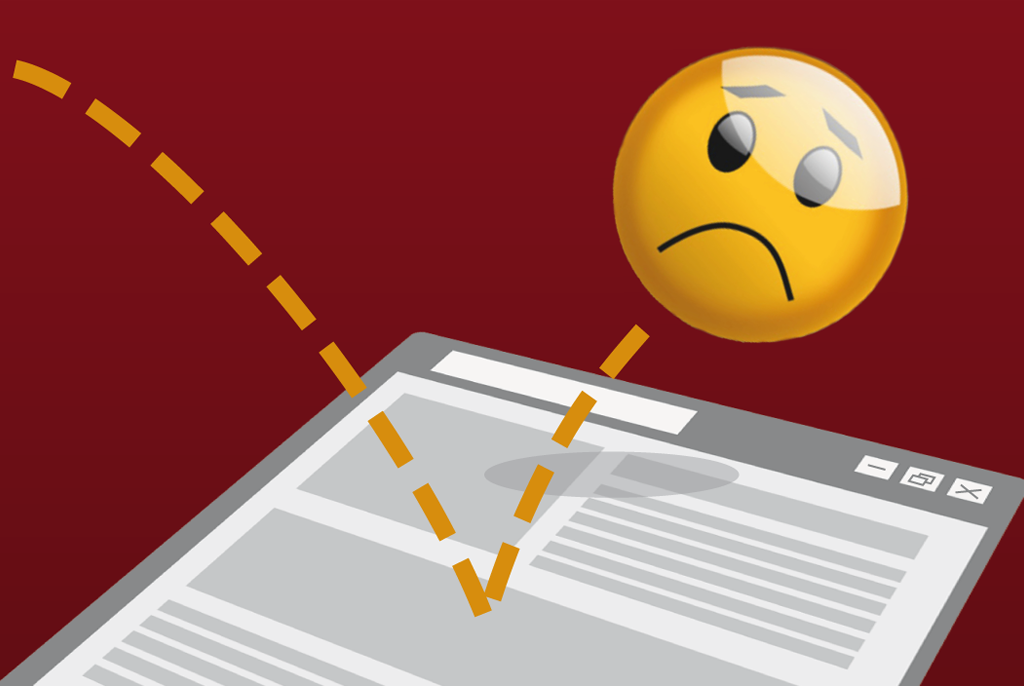What is Bounce Rate & How to Improve it

What is Bounce Rate?
Bounce rate is the percentage of single-page sessions on your website, meaning a person left your website from an entrance page without visiting another page on your website.
What is an average or typical Bounce Rate?
As a rule of thumb, an average bounce rate can range from 41-60%. An excellent bounce rate will be between 20-40%, but most websites will fall into the 41-60% range. Anything over 70% should be considered for improvement outside of blogs, news and event websites that users will view an article and leave.
Is a high Bounce Rate such a bad thing?
People agree to disagree on this matter, most experts believe bounce rate may impact SEO, either directly or indirectly, but there isn’t definitive proof (as with most SEO factors as Google doesn’t want to give away specifics of their algorithm) as to the significance of the impact. Google’s Gary Illyes stated in 2015 that they do not use bounce rate data from Google Analytics. So while you are not directly affected by your bounce rate in search rankings, it does not mean your website is performing to the best of its ability. Bounce rate’s impact really depends on your website’s goals. If you are looking to convert leads on your website, bounce rate is very important to your company’s site. Single page engagement and a high bounce rate means a user is not filling out a form, downloading your white papers or taking the next step in doing business with you. However, if you are a company that puts out media – blog posts, videos, and news – a high bounce rate is fairly typical as the individual is reading the article or watching the video that most interests them and leaving. While bounce rate is not the most pertinent area of your website you need to clean up, depending on your website goals, it is certainly an area to consider cleaning up purely for better user experience and conversion rates.
What are some of the reasons you have a high Bounce Rate?
- If you have a single page website, your bounce rate will always be 100% because the user cannot go anywhere else.
- You may not have your Google Analytics tracking code setup correctly. If you’re seeing a high bounce rate, double check that the entire site has the code somewhere in the header or footer.
- Coding errors play a factor in a high bounce rate. Bounce rate is determined based on cookies, and if something is resetting that cookie, it resets the session and sends inaccurate data to your Google Analytics account. An example of something that might reset a cookie would be a pop-up or live chat feature.
- Poor site design may lead to a high bounce rate. If a user can’t get where they need to go quickly, they’re likely to leave your website.
- User behavior factors into this as well. You can’t predict how a user might interact or what they’re looking for. If a user bookmarks a specific page, leaves and only visits that page, it’s still considered a bounce.
- Poor SEO Keyword strategy – If you are targeting keywords that aren’t the most relevant to your business or content, that may be leading to an increased bounce rate. If you are a car dealership, you should not be targeting words like “car” because the user could be looking for car repair, not new cars. You should be targeting more specific phrases like “Dubai Car Sales”.
How do I improve my Bounce Rate?
- Consider a website redesign. A huge factor in a high bounce rate could be a poor user experience. Whether you’re overwhelming the user with too much content without breaking it up, your menu structure is unclear or the user gets buried in the site and can’t find the next relevant step, a site redesign and evaluation could help improve your bounce rate.
- Break up content into consumable chunks. No one wants to read paragraphs and paragraphs of information. Make bulleted lists or breakup content with images or videos to make content more readable.
- Filter out and block spam.
- Improve your website page speed and load time. Page speed is one of the quickest reasons a person will leave a website. If the user can get the same result faster somewhere else, they will.
- Make sure your code is not resetting any cookies or affecting the tracking code in any way. This is not only key to bounce rate but website session, users vs. new users and page views. Clean code that isn’t impeding the tracking code will give the most accurate Google Analytics dashboard.
- Create landing pages specific to conversion goals with prominent calls to action and relevant content that will satisfy a user’s search queries.
- Provide relevant content to the product or service you’re offering in addition to allowing the purchase of the product or service . Some people aren’t ready to make a purchase. Give them value-adds that are useful during others phases of the purchase cycle. For example, give them tools to assist in the research phase, such as product manuals. Call to actions aren’t the only way, they just provide the conversion.
Bounce rate importance depends on the goals of your website. For some, bounce rate is key to website conversion. For others, bounce rate isn’t as relevant to website success. However, taking some of the above measures can help your company improve their bounce rate and overall website success.
About Me

SAMEER KASMA
E-commerce & Digital Marketing Expert
Phone: +971-527805996
Email: kasmasamir@gmail.com
SEARCH
CATEGORIES
RECENT POST
 A Quick Guide for Google’s SEO Experience Update 2021SAMEER KASMA - 02 November
A Quick Guide for Google’s SEO Experience Update 2021SAMEER KASMA - 02 November Perfect Facebook Ads Funnel for Your BusinessSAMEER KASMA - 05 October
Perfect Facebook Ads Funnel for Your BusinessSAMEER KASMA - 05 October How to Setup YouTube 6 Seconds Bumper AdsSAMEER KASMA - 09 September
How to Setup YouTube 6 Seconds Bumper AdsSAMEER KASMA - 09 September How to Set Your Ecommerce Store for Black FridaySAMEER KASMA - 16 November
How to Set Your Ecommerce Store for Black FridaySAMEER KASMA - 16 November 15 Rules for Successful Email MarketingSAMEER KASMA - 17 September
15 Rules for Successful Email MarketingSAMEER KASMA - 17 September
ARCHIVES
- November 2021
- October 2021
- September 2021
- November 2020
- September 2020
- August 2020
- July 2020
- June 2020
- May 2020
- April 2020
- March 2020
- February 2020
- January 2020
- December 2019
- November 2019
- July 2019
- February 2019
- January 2019
- December 2018
- May 2018
- April 2018
- March 2018
- January 2018
- December 2017
- October 2017
- September 2017
- August 2017
- July 2017


